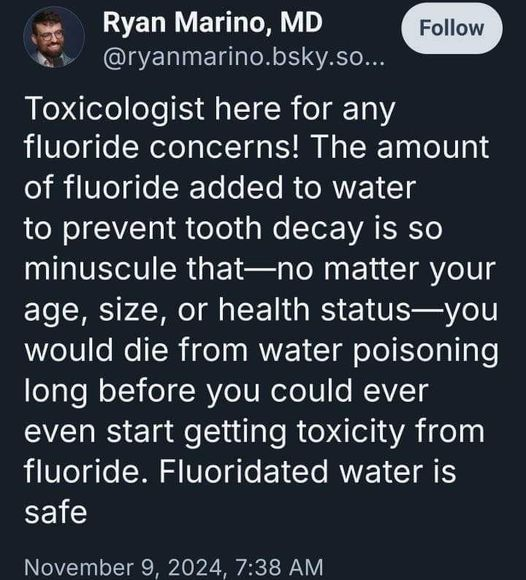this post was submitted on 22 Nov 2024
1608 points (96.7% liked)
Science Memes
11586 readers
1098 users here now
Welcome to c/science_memes @ Mander.xyz!
A place for majestic STEMLORD peacocking, as well as memes about the realities of working in a lab.

Rules
- Don't throw mud. Behave like an intellectual and remember the human.
- Keep it rooted (on topic).
- No spam.
- Infographics welcome, get schooled.
This is a science community. We use the Dawkins definition of meme.
Research Committee
Other Mander Communities
Science and Research
Biology and Life Sciences
- [email protected]
- [email protected]
- [email protected]
- [email protected]
- [email protected]
- [email protected]
- [email protected]
- [email protected]
- [email protected]
- [email protected]
- [email protected]
- [email protected]
- [email protected]
- [email protected]
- [email protected]
- [email protected]
- [email protected]
- [email protected]
- [email protected]
- [email protected]
- [email protected]
- [email protected]
- [email protected]
- [email protected]
- !reptiles and [email protected]
Physical Sciences
- [email protected]
- [email protected]
- [email protected]
- [email protected]
- [email protected]
- [email protected]
- [email protected]
- [email protected]
- [email protected]
Humanities and Social Sciences
Practical and Applied Sciences
- !exercise-and [email protected]
- [email protected]
- !self [email protected]
- [email protected]
- [email protected]
- [email protected]
Memes
Miscellaneous
founded 2 years ago
MODERATORS
you are viewing a single comment's thread
view the rest of the comments
view the rest of the comments

The question to me is - do we even have to fluoridate water and is this really the best approach?
For example, most European countries do not commonly use fluoride in their water supply, and everyone's just fine! No extra cavities, no special health risks. People commonly drink tap water and do not care about potential for any adverse effects, because it's just that - clean water. And for any teeth-related issues, you already have your toothpaste providing more than enough fluorine.
https://static.spokanecity.org/documents/citycouncil/interest-items/2020/09/city-council-information-on-fluoride-2020-09-08.pdf
Water fluoridation reaches over 13 million Europeans through programs in England, Ireland, Poland, Serbia and Spain
Children in deprived areas benefit most from water fluoridation according to 2018 English health agency report
Over 70 million Europeans receive fluoridated salt through programs in Austria, France, Germany, Switzerland and other countries. Salt fluoridation is recommended when water fluoridation is not feasible
European Academy of Pediatric Dentistry endorses water fluoridation as "core component of oral health policy"
Fluoridated milk programs have operated in Bulgaria, England, Hungary, Russia and Scotland
Several European countries provide free or subsidized fluoride treatments through national healthcare:
Scandinavian schools offer fluoride varnish, tablets and rinse programs
Some regions in Europe have naturally fluoridated water, such as parts of Italy. Italian health officials support water fluoridation but don't implement additional programs due to naturally optimal fluoride levels in some areas
https://www.cdc.gov/fluoridation/about/statement-on-the-evidence-supporting-the-safety-and-effectiveness-of-community-water-fluoridation.html
Evidence shows that water fluoridation prevents tooth decay by providing frequent and consistent contact with low levels of fluoride, ultimately reducing tooth decay by about 25% in children and adults.
evidence shows that schoolchildren living in communities where water is fluoridated have, on average, 2.25 fewer decayed teeth compared to similar children not living in fluoridated communities.
A study to compare costs associated with community water fluoridation with treatment savings achieved through reduced tooth decay, which included 172 public water systems, each serving populations of 1,000 individuals or more, found that 1 year of exposure to fluoridated water yielded an average savings of $60 per person when the lifetime costs of maintaining a restoration were included.
Analyses of Medicaid claims data in 3 other states (Louisiana, New York, and Texas), have also found that children living in fluoridated communities have lower caries related treatment costs than do similar children living in non-fluoridated communities; the difference in annual per child treatment costs ranged from $28 to $67.
https://pmc.ncbi.nlm.nih.gov/articles/PMC9544072/
community water fluoridation continues to decrease cavities by 25% at the population level.
Even with fluoridated products such as toothpaste and mouth rinses, this public health practice can reduce an additional 25% of tooth decay in children and adults
In 1945, Grand Rapids, Michigan became the first U.S. city to fluoridate its public water supply. Five years later, Grand Rapids schoolchildren were found to have significantly fewer cavities than children from the control community of Muskegon, and additional water districts, including Muskegon began fluoridating and seeing similar results
Studies have shown that populations from lower socioeconomic groups within fluoridated communities have less tooth decay when compared to peers in nonfluoridated communities
The cost of a lifetime of water fluoridation for one person is less than the cost of one filling
More info: https://www.ada.org/resources/community-initiatives/fluoride-in-water
Thanks for provided context!
I'll look into the data.
It depends if you believe in the apocryphal story behind fluoridation. This is a story that justifies the state and it's right of medical intervention into your life with the need of your informed consent.
These types of stories are designed to justify the right to act of an entity/egregor using the least objectionnable scenario possible. Once this precedent is established it can built upon to justify other actions in other scenarios. All the other unobjectionnable things done to you or in your name